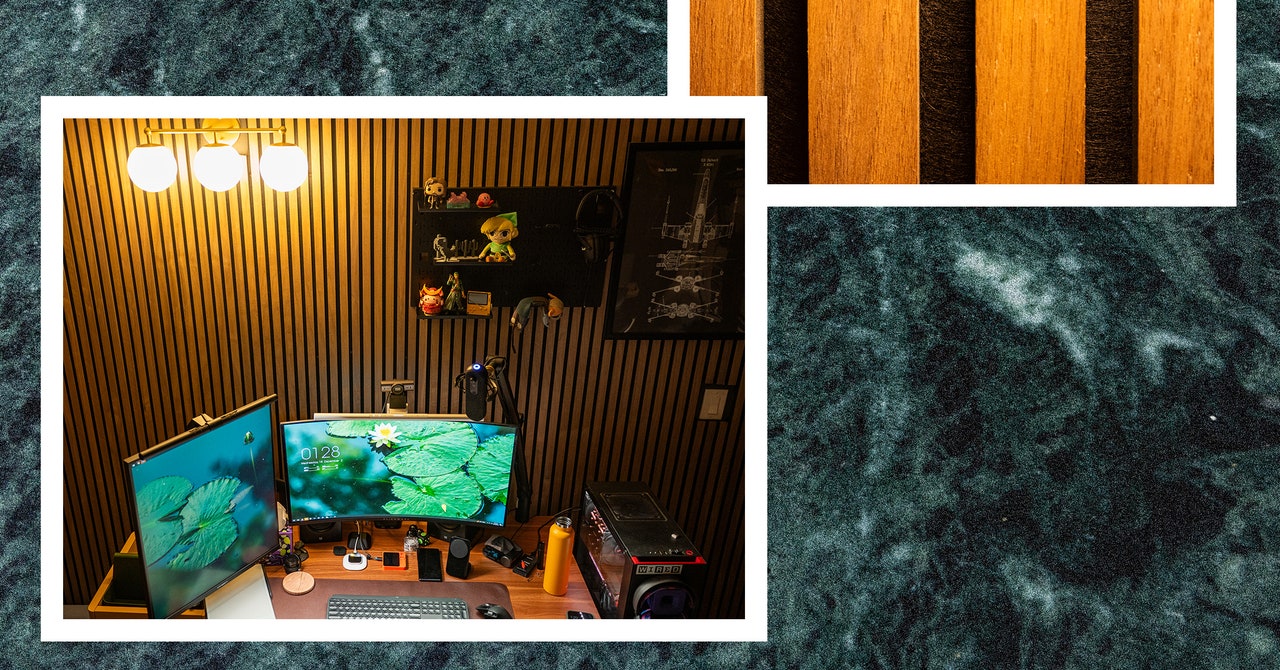As someone who has painted walls in almost every apartment I’ve lived in as an adult, let me say that painting sucks. I’ve learned tricks over the years to finish the job quicker (I even own a set of paint tools!), but it’s still a long, annoying process that can suck up more time than you’d expect.
Last year I was privileged to become a homeowner, and naturally the Great Algorithm noticed and began shoving all sorts of home makeover projects, products, and services onto my Instagram. (Did you know you can get a roof replacement for free? Yes, it sounds too good to be true.) One did catch my eye, though—Wood Veneer Hub. I saw ad after ad clawing through my feed showcasing home setups with a lovely wood slat accent wall. It was exactly my kind of aesthetic.
The company promises easy installation—a room makeover that won’t take up a laborious day of painting, and it largely delivers. As WIRED’s resident home office product tester, I decided to try these panels for my office. I’ve done standing desks, office chairs, webcams, desk lamps, and even filing cabinets, but never have I tested something that’d drastically change the look of my space.
Fairly Easy Install
Wood Veneer Hub’s Slatpanels, as they’re called, comprise medium-density fiberboard strips attached to recycled felt material with sound-dampening properties. Each box has two Slatpanels with about nine slats per panel—you’ll need to measure your walls (or ceiling!) to find the required size. You can choose between a No Finish or an Oiled Finish option, and I suggest the latter—it costs a little more but saves you the hassle of applying a finish and protects the wood.
I decided to try them out on one wall of my home office, like an accent wall. It took about 13 Slatpanels (I was sent seven boxes, meaning I was left with one spare Slatpanel), and I screwed them into the studs. You can install them on top of your baseboard, but I decided it looked better without my baseboard, so I stripped it away. There’s a tiny gap between the panels and my floor but it’s hardly noticeable. This also meant I didn’t need to cut the panels (except for outlets and light switches).
That’s the tricky part—cutting out holes. I needed to cut out a few holes for outlets, a light switch, and my light fixture. If you have an electric saw, you’re already in a much better place than I was. I had a simple handsaw and no workbench, so it was difficult to get straight lines while sawing off pieces. I used my Milwaukee Fastback knife to cut from the felt side first, and it did a surprisingly good job. Be smarter than me and use a long level or ruler and tape it to the panels to keep those lines straight. Thankfully, you have to look closely to see how jagged my holes are, or at least that’s what I keep telling myself.





